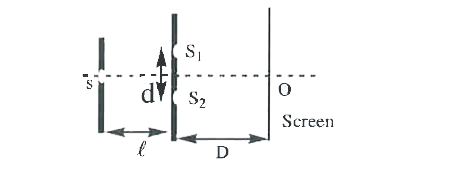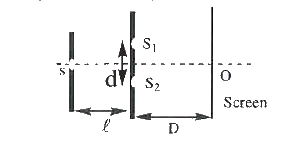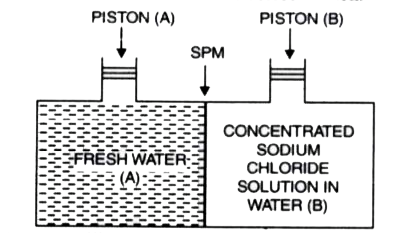Identify the correct statement(s):
Sodium carbonate on heating evolves carbon dioxide
Sodium nitrate on heating evolves nitrogen dioxide
Sodium hydroxide does not decompose on heating
Sodium bicarbonate on heating evolve carbon dioxide
The correct Answer is:C, D
To solve the question of identifying the correct statements regarding sodium compounds, we will analyze each statement one by one.
1. Statement 1: Sodium carbonate on heating evolves carbon dioxide.
- Analysis: Sodium carbonate (Na2CO3) exists as decahydrate (Na2CO3·10H2O). When heated, it loses water of crystallization and converts to monohydrated sodium carbonate (Na2CO3·H2O) and then to anhydrous sodium carbonate (Na2CO3). No carbon dioxide (CO2) is evolved during this process.
- Conclusion: This statement is false.
2. Statement 2: Sodium nitrate on heating evolves dinitrogen.
- Analysis: Sodium nitrate (NaNO3) decomposes upon heating, producing sodium nitrite (NaNO2) and oxygen (O2), but it does not produce dinitrogen (N2) or nitrogen dioxide (NO2).
- Conclusion: This statement is false.
3. Statement 3: Sodium hydroxide does not decompose on heating.
- Analysis: Sodium hydroxide (NaOH) does not decompose when heated. It remains stable under heat. However, it can dissociate into Na⁺ and OH⁻ ions during electrolysis in water.
- Conclusion: This statement is true.
4. Statement 4: Sodium bicarbonate on heating evolves carbon dioxide.
- Analysis: Sodium bicarbonate (NaHCO3) decomposes upon heating to form sodium carbonate (Na2CO3), carbon dioxide (CO2), and water (H2O). The reaction can be represented as:
2NaHCO3→Na2CO3+CO2+H2O
- Conclusion: This statement is true.
Final Conclusion:
The correct statements are:
- Statement 3: Sodium hydroxide does not decompose on heating (True).
- Statement 4: Sodium bicarbonate on heating evolves carbon dioxide (True).
- Analysis: Sodium carbonate (Na2CO3) exists as decahydrate (Na2CO3·10H2O). When heated, it loses water of crystallization and converts to monohydrated sodium carbonate (Na2CO3·H2O) and then to anhydrous sodium carbonate (Na2CO3). No carbon dioxide (CO2) is evolved during this process.
- Conclusion: This statement is false.
- Analysis: Sodium nitrate (NaNO3) decomposes upon heating, producing sodium nitrite (NaNO2) and oxygen (O2), but it does not produce dinitrogen (N2) or nitrogen dioxide (NO2).
- Conclusion: This statement is false.
- Analysis: Sodium hydroxide (NaOH) does not decompose when heated. It remains stable under heat. However, it can dissociate into Na⁺ and OH⁻ ions during electrolysis in water.
- Conclusion: This statement is true.
- Analysis: Sodium bicarbonate (NaHCO3) decomposes upon heating to form sodium carbonate (Na2CO3), carbon dioxide (CO2), and water (H2O). The reaction can be represented as:
2NaHCO3→Na2CO3+CO2+H2O
- Conclusion: This statement is true.
The correct statements are:
- Statement 3: Sodium hydroxide does not decompose on heating (True).
- Statement 4: Sodium bicarbonate on heating evolves carbon dioxide (True).
Topper's Solved these Questions
- BOOK - VK JAISWAL ENGLISHCHAPTER - s-BLOCK ELEMENTSEXERCISE - MATCH THE COLUMN6videos
s-BLOCK ELEMENTS
- BOOK - VK JAISWAL ENGLISHCHAPTER - s-BLOCK ELEMENTSEXERCISE - ASSERTION-REASON TYPE QUESTIONS33videos
s-BLOCK ELEMENTS
- BOOK - VK JAISWAL ENGLISHCHAPTER - s-BLOCK ELEMENTSEXERCISE - Level 349videos
s-BLOCK ELEMENTS
- BOOK - VK JAISWAL ENGLISHCHAPTER - QUALITATIVE INORGANIC ANALYSISEXERCISE - SUBJECTIVE PROBLEMS4videos
QUALITATIVE INORGANIC ANALYSIS
- BOOK - VK JAISWAL ENGLISHCHAPTER - TYPES OF REACTIONSEXERCISE - SUBJECTIVE PROBLEMS42videos
TYPES OF REACTIONS
Similar Questions
Identify th correct statement(s):
View SolutionThe figure shows a schematic diagram showing the arrangement of Youngs's Double Slit Experiment

Identify the correct statement(s) if the source slit S moved closer to S1S2, i.e., the distance l decreasesView SolutionThe figure shows a schematic diagram showing the arrangement of Young.s Double Slit Experiment

Identify the correct statement (s) if the source slit S moved closer to S1S2 i.e the distance l decreasesView SolutionIdentify the correct statements
View SolutionIdentify the correct statements
View SolutionIdentify the correct statements:
View SolutionIdentify the correct statements:
View SolutionIdentify the correct statements:
View SolutionConsider the Fig. and make the correct option.
 View Solution
View SolutionIdentify the correct statements (s):
View Solution

